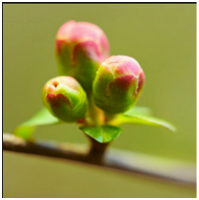Funding for Australian Steiner Schools: Benefits, Challenges and Lessons of Government Support
In this essay by the Head of the Steiner Education Assn. in Australia, Tracey Puckeridge discusses the funding structure of Australian Steiner schools and offers an assessment of the benefits, drawbacks and practical realities of the current government funding for Steiner Schools.
Government funding for Steiner and other independent schools in Australia has been available through a number of avenues since 1964. Since that time, the federal government has increasingly instigated education reforms, which are tied to funding agreements. As a result, Australia now has 27 different funding models and a complex maze of regulatory requirements for schools.
For the time being, Steiner schools in Australia enjoy significant benefits from the national approach to educational funding. However, with a political and uncertain funding and regulatory future, they must remain creative and flexible as they face a growing set of challenges in navigating the country’s educational environment.
How the funding model is structured
In Australia there are three categories of schools: government (State or public), Catholic, and non-government (independent schools). Steiner schools fall under the non-government (independent) category. In some states there are also Steiner stream classes in State schools, which are fully funded.
Steiner and other independent schools in Australia receive funds from three main sources: the Commonwealth Government; State or Territory Government; and private income from parents (school fees), benefactors, tax-deductible donations (to building and library funds) and fundraising.
Each State and Territory has a school registration authority responsible for the registration of independent schools. They often apply different levels of scrutiny and compliance across their jurisdictions. Once registered, the school is entitled to both State and Commonwealth funding, with amounts varying according to a range of extremely complex formulae.
In 1964, the first government funding to independent schools was received through capital funding grants. From 1970, recurrent funding occurred on a per student basis. After 1973, these grants were calculated as a percentage of the cost of educating a child in a government school and linked to a four-year cycle under the Commonwealth Act. There have been many additional changes to the Act over the last 40 years, up to the latest iteration adopted in 2012.
There is currently a funding review of the latest model. Steiner Education Australia’s submission can be found at http://steinereducation.edu.au/news/latest/sea-funding-submission-to-senate-select-committee.
What are the benefits of government funding?
Government funding for non-government schools provides choice and diversity of schooling in Australia. Parents can choose from a wide range of religious and philosophically based schools, or those in the public or Catholic sector.
In Australia, teachers are well paid. If independent schools in Australia did not receive government funding, most would close due to the high nature of wages -- approximately 70 to 75% of a school’s total expenditure. Independent schools are also able to access government grants for capital funding for building projects.
Another benefit of government funding is increased professionalism among teaching staff. Every teacher must have full university qualifications, be registered under their state teacher registration institute and be regularly appraised against national professional teaching standards.
The Commonwealth and State governments have also increased funding for many projects to improve literacy and numeracy, support students with disability, improve educational outcomes for indigenous students, empower school leadership, drive school improvement, etc. Many of these funds have been distributed through independent school associations.
With the introduction of an Australian curriculum in 2012, the Commonwealth government created an opportunity for a national Steiner curriculum to be recognised as an alternate curriculum framework. Steiner schools across Australia, therefore, agreed to work together to develop an Australian Steiner Curriculum Framework to ensure the integrity of Steiner’s indications and also meet curriculum outcomes as required by registration. Curriculum development is still in progress and many benefits have already been identified. (For more, visit http://steinereducation.edu.au/curriculum/ )
What are the drawbacks?
Recently, managerial bureaucrats and policy makers in Australia have strongly influenced the educational agenda, emphasizing financial accountability and the goal of producing a multi-skilled and flexible workforce able to “compete in the global economy on knowledge and innovation” (Melbourne Declaration on Educational Goals for Young Australians, 2008). However, they have largely ignored international educational research and academic recommendations for policy reform in order to pursue their political/economic/business agenda.
The Commonwealth Government has implemented reforms to increase transparency in a push for public accountability such as the National Assessment Plan of compulsory standardised testing to measure student outcomes and school performance as part of the funding agreement.
Steiner school parents have the option to withdraw their child from these standardised tests but the school is obligated to offer them in Years 3, 5, 7 and 9 with more tests on the way and the introduction of online testing in the next few years. The publication of standardised testing as a key measure of school performance on the national MySchool website has evoked much debate from stakeholders both for and against the publication of the data, which has resulted in the comparison of schools and published league tables.
What does this mean for Australian Steiner Schools?
Steiner schools are operating in a highly competitive educational environment. Many non-Steiner schools, for example, characterize their education in similar language as the Steiner schools; holistic, creative, imaginative, excellent music, art and outdoor education programs, balancing head, heart and hands, etc. Steiner schools must clearly articulate what they stand for, what they promise and then hold up to expectations and constant scrutiny.
Administrative costs have increased to manage the barrage of reforms and to up-skill staff in order to meet increased accountability requirements and new legislation. Many schools have reviewed the role of the College of Teachers and have made changes according to their local needs and context as to how they manage workloads and expectations, while still retaining the core of pedagogical discussion and practice.
A new focus on school governance may also see directors of school boards having to complete accredited courses, so they fully understand their responsibilities. While this would be beneficial, small schools, or schools in regional areas that already find it difficult to find directors for school boards may see this as an added burden.
In Summary
The current government funding model is complex. Formula for determining funding allocations is inconsistent, and difficult to analyze and understand. As a result, many schools are in a state of uncertainty as to how they can financially manage and plan long term in an increasingly competitive environment with higher accountability.
Tracey Puckeridge
Chief Executive Officer
Steiner Education Australia
Funding for Australian Steiner Schools: Benefits, Challenges and Lessons of Government Support



